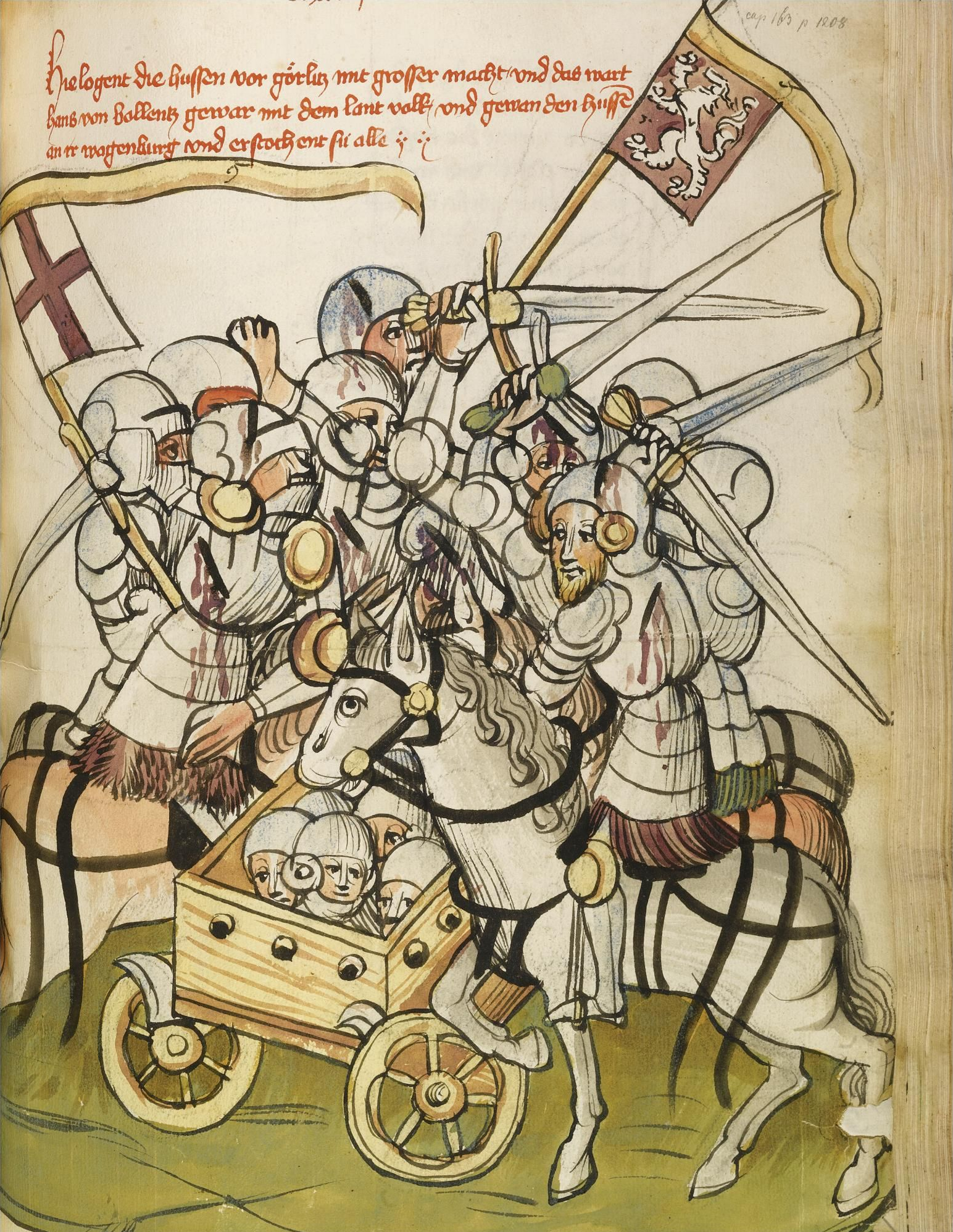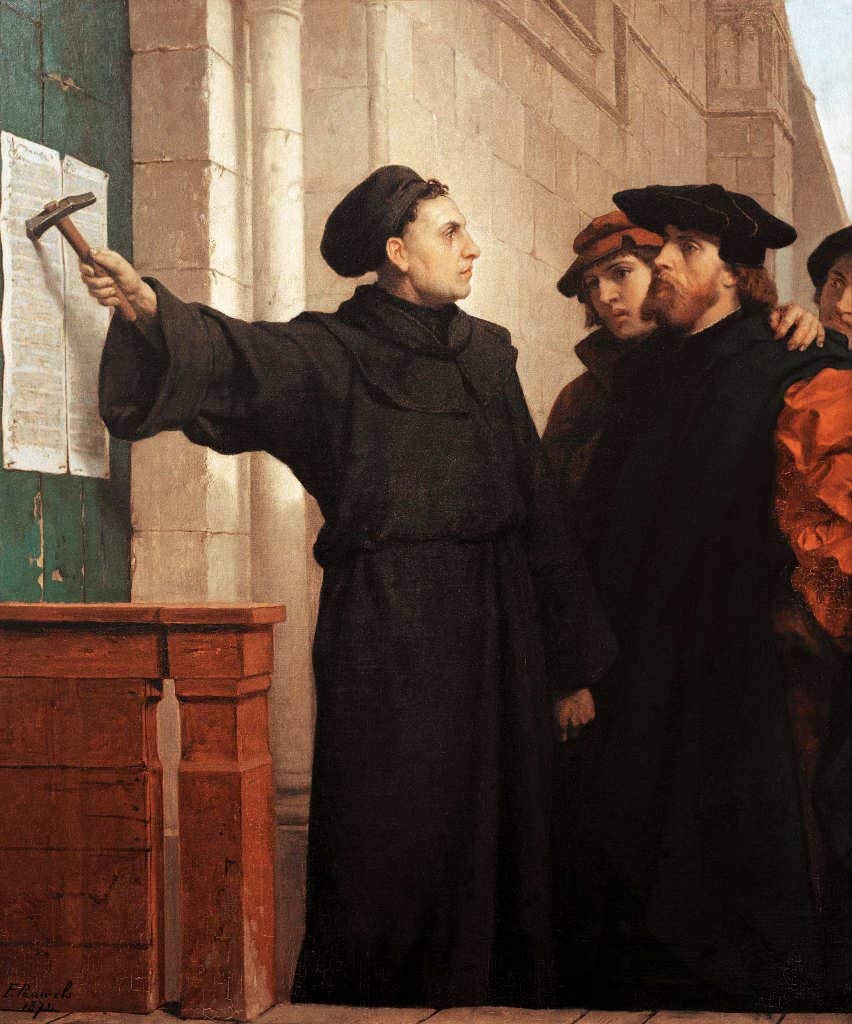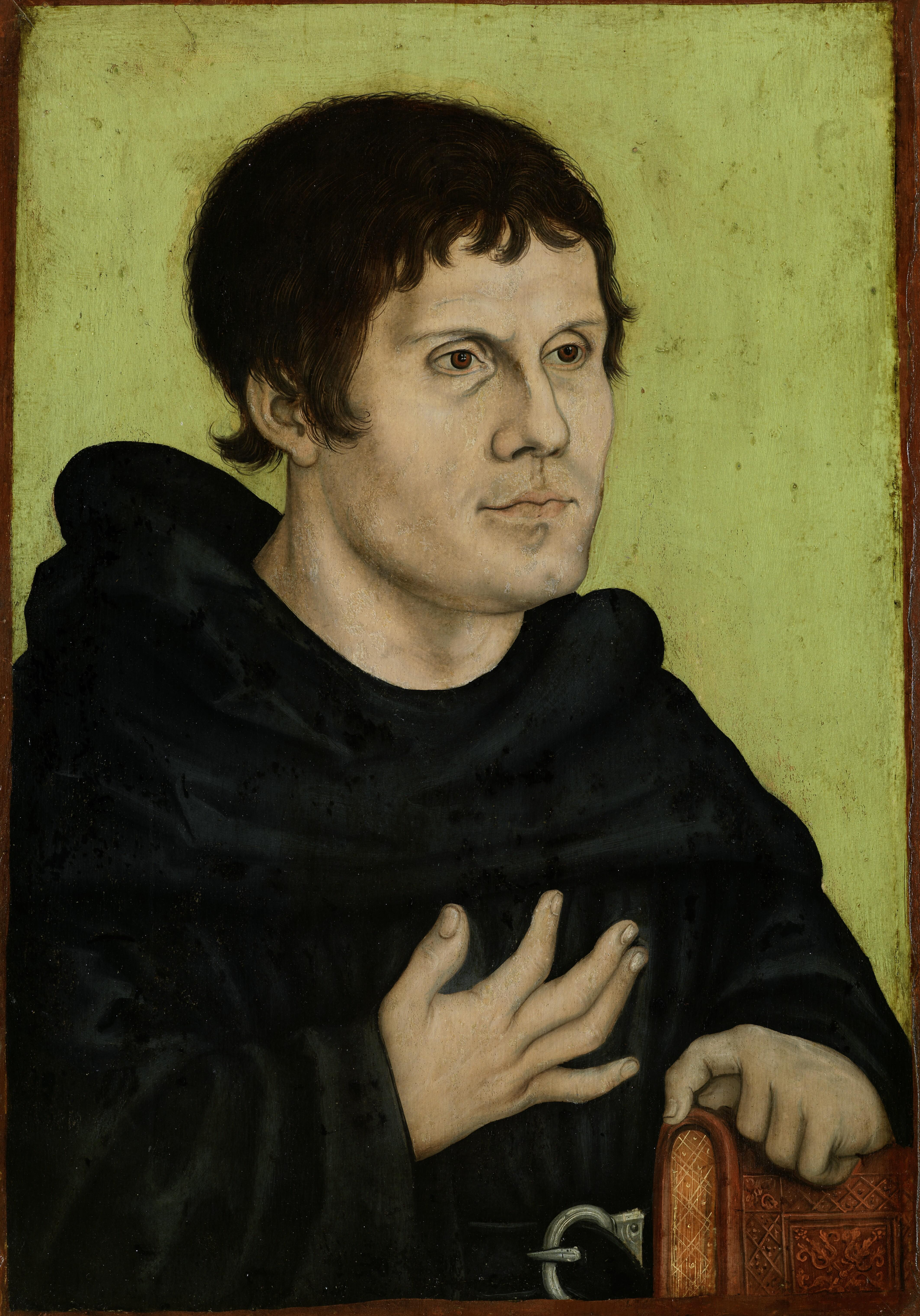|
Moravian Church
The Moravian Church, or the Moravian Brethren ( or ), formally the (Latin: "Unity of the Brethren"), is one of the oldest Protestant denominations in Christianity, dating back to the Bohemian Reformation of the 15th century and the original Unity of the Brethren () founded in the Kingdom of Bohemia, sixty years before Martin Luther's Reformation. The church's heritage can be traced to 1457 and the Lands of the Bohemian Crown, which included Bohemia, Moravia, Silesia, and previously the Hussite movement against several practices and doctrines of the Catholic Church. Its name is derived from exiles who fled from Moravia to Saxony in 1722 to escape the Counter-Reformation, establishing the Christian community of Herrnhut. Hence, it is also known in German as the ("Unity of Brethren f Herrnhut). The modern has about one million members worldwide, continuing their tradition of missionary work, such as in the Americas and Africa, which is reflected in their broad g ... [...More Info...] [...Related Items...] OR: [Wikipedia] [Google] [Baidu] [Amazon] |
Nicolaus Ludwig Zinzendorf
Nikolaus Ludwig, Reichsgraf von Zinzendorf und Pottendorf (26 May 1700 – 9 May 1760) was a German religious and social reformer, bishop of the Moravian Church, founder of the Herrnhuter Brüdergemeine, Christian mission pioneer and a major figure of 18th-century Protestantism. Born in Dresden, Zinzendorf was often influenced by strong and vehement feelings, and he was easily moved both by sorrow and joy. Called Ludwig or Brother Ludwig by his intimates, he was a natural orator, and though his dress was simple his personal appearance gave an impression of distinction and force. He was notable for providing shelter for German-speaking Moravian exiles at Herrnhut, an effort that was influenced by Pietist ideas from the Lutheran faith he was brought up in. Zinzendorf was critical of slavery, and played a role in starting the Protestant mission movement by supporting two determined Moravian missionaries Johann Leonhard Dober and David Nitschmann to go (via Copenhagen) to the ... [...More Info...] [...Related Items...] OR: [Wikipedia] [Google] [Baidu] [Amazon] |
Stained-glass
Stained glass refers to coloured glass as a material or art and architectural works created from it. Although it is traditionally made in flat panels and used as windows, the creations of modern stained glass artists also include three-dimensional structures and sculpture. Modern vernacular usage has often extended the term "stained glass" to include domestic lead light and '' objets d'art'' created from glasswork, for example in the famous lamps of Louis Comfort Tiffany. As a material ''stained glass'' is glass that has been coloured by adding metallic salts during its manufacture. It may then be further decorated in various ways. The coloured glass may be crafted into a stained-glass window, say, in which small pieces of glass are arranged to form patterns or pictures, held together (traditionally) by strips of lead, called cames or calms, and supported by a rigid frame. Painted details and yellow-coloured silver stain are often used to enhance the design. The term ''stai ... [...More Info...] [...Related Items...] OR: [Wikipedia] [Google] [Baidu] [Amazon] |
Protestantism
Protestantism is a branch of Christianity that emphasizes Justification (theology), justification of sinners Sola fide, through faith alone, the teaching that Salvation in Christianity, salvation comes by unmerited Grace in Christianity, divine grace, the priesthood of all believers, and the Bible as the sole infallible source of authority for Christian faith and practice. The five solae, five ''solae'' summarize the basic theological beliefs of mainstream Protestantism. Protestants follow the theological tenets of the Reformation, Protestant Reformation, a movement that began in the 16th century with the goal of reforming the Catholic Church from perceived Criticism of the Catholic Church, errors, abuses, and discrepancies. The Reformation began in the Holy Roman Empire in 1517, when Martin Luther published his ''Ninety-five Theses'' as a reaction against abuses in the sale of indulgences by the Catholic Church, which purported to offer the remission of the Purgatory, temporal ... [...More Info...] [...Related Items...] OR: [Wikipedia] [Google] [Baidu] [Amazon] |
Counter-Reformation
The Counter-Reformation (), also sometimes called the Catholic Revival, was the period of Catholic resurgence that was initiated in response to, and as an alternative to or from similar insights as, the Protestant Reformations at the time. It was a comprehensive effort arising from the decrees of the Council of Trent. As a political-historical period, it is frequently dated to have begun with the Council of Trent (1545–1563) and to have ended with the political conclusion of the European wars of religion in 1648, though this is controversial. However, as a theological-historical description, the term may be obsolescent or over-specific: the broader term Catholic Reformation () also encompasses the reforms and movements within the Church in the periods immediately before Protestantism or Trent, and lasting later. The effort produced Apologetics, apologetic and polemical documents, anti-corruption efforts, spiritual movements, the promotion of new religious orders, and the flo ... [...More Info...] [...Related Items...] OR: [Wikipedia] [Google] [Baidu] [Amazon] |
Saxony
Saxony, officially the Free State of Saxony, is a landlocked state of Germany, bordering the states of Brandenburg, Saxony-Anhalt, Thuringia, and Bavaria, as well as the countries of Poland and the Czech Republic. Its capital is Dresden, and its largest city is Leipzig. Saxony is the List of German states by area, tenth largest of Germany's sixteen states, with an area of , and the List of German states by population, sixth most populous, with more than 4 million inhabitants. The term Saxony (other), Saxony has been in use for more than a millennium. It was used for the medieval Duchy of Saxony, the Electorate of Saxony of the Holy Roman Empire, the Kingdom of Saxony, and twice for a republic. The first Free State of Saxony was established in 1918 as a constituent state of the Weimar Republic. After World War II, it was under Soviet occupation before it became part of communist East Germany and was abolished by the government in 1952. Following German reunificat ... [...More Info...] [...Related Items...] OR: [Wikipedia] [Google] [Baidu] [Amazon] |
Catholic Church
The Catholic Church (), also known as the Roman Catholic Church, is the List of Christian denominations by number of members, largest Christian church, with 1.27 to 1.41 billion baptized Catholics Catholic Church by country, worldwide as of 2025. It is among the world's oldest and largest international institutions and has played a prominent role in the history and development of Western civilization.Gerald O'Collins, O'Collins, p. v (preface). The church consists of 24 Catholic particular churches and liturgical rites#Churches, ''sui iuris'' (autonomous) churches, including the Latin Church and 23 Eastern Catholic Churches, which comprise almost 3,500 dioceses and Eparchy, eparchies List of Catholic dioceses (structured view), around the world, each overseen by one or more Bishops in the Catholic Church, bishops. The pope, who is the bishop of Rome, is the Papal supremacy, chief pastor of the church. The core beliefs of Catholicism are found in the Nicene Creed. The ... [...More Info...] [...Related Items...] OR: [Wikipedia] [Google] [Baidu] [Amazon] |
Hussite Movement
upright=1.2, Battle between Hussites (left) and Crusades#Campaigns against heretics and schismatics, Catholic crusaders in the 15th century upright=1.2, The Lands of the Bohemian Crown during the Hussite Wars. The movement began during the Prague.html" ;"title="Renaissance in Prague">Renaissance in Prague and quickly spread south and then through the rest of the Kingdom of Bohemia. Eventually, it expanded into the remaining domains of the Bohemian Crown as well. The Hussites ( Czech: ''Husité'' or ''Kališníci'', "Chalice People"; Latin: ''Hussitae'') were a Czech Proto-Protestantism, proto-Protestant Christian movement influenced by both the Byzantine Rite and John Wycliffe that followed the teachings of reformer Jan Hus (fl. 1401–1415), a part of the Bohemian Reformation. The Czech lands had originally been Christianized by Byzantine Greek missionaries Saints Cyril and Methodius, who introduced the Byzantine Rite in the Old Church Slavonic liturgical language and th ... [...More Info...] [...Related Items...] OR: [Wikipedia] [Google] [Baidu] [Amazon] |
Silesia
Silesia (see names #Etymology, below) is a historical region of Central Europe that lies mostly within Poland, with small parts in the Czech Silesia, Czech Republic and Germany. Its area is approximately , and the population is estimated at 8,000,000. Silesia is split into two main subregions, Lower Silesia in the west and Upper Silesia in the east. Silesia’s culture reflects its complex history and diverse influences, blending Polish, Czech, and German elements. The region is known for its distinctive Silesian language (still spoken by a minority in Upper Silesia), richly decorated folk National costumes of Poland, costumes, hearty regional Silesian cuisine, cuisine, and a mix of Gothic, Baroque, and industrial-era Silesian architecture, architecture seen in its cities and towns. The largest city of the region is Wrocław. Silesia is situated along the Oder River, with the Sudeten Mountains extending across the southern border. The region contains many historical landmarks ... [...More Info...] [...Related Items...] OR: [Wikipedia] [Google] [Baidu] [Amazon] |
Moravia
Moravia ( ; ) is a historical region in the eastern Czech Republic, roughly encompassing its territory within the Danube River's drainage basin. It is one of three historical Czech lands, with Bohemia and Czech Silesia. The medieval and early modern Margraviate of Moravia was a crown land of the Lands of the Bohemian Crown from 1348 to 1918, an imperial state of the Holy Roman Empire from 1004 to 1806, a crown land of the Austrian Empire from 1804 to 1867, and a part of Austria-Hungary from 1867 to 1918. Moravia was one of the five lands of First Czechoslovak Republic, Czechoslovakia founded in 1918. In 1928 it was merged with Czech Silesia, and then dissolved in 1948 during the abolition of the land system following the 1948 Czechoslovak coup d'état, communist coup d'état. Its area of 22,623.41 km2 is home to about 3.0 million of the Czech Republic's 10.9 million inhabitants. The people are historically named Moravians, a subgroup of Czechs, the other group being calle ... [...More Info...] [...Related Items...] OR: [Wikipedia] [Google] [Baidu] [Amazon] |
Lands Of The Bohemian Crown
The Lands of the Bohemian Crown were the states in Central Europe during the Middle Ages, medieval and early modern periods with feudalism, feudal obligations to the List of Bohemian monarchs, Bohemian kings. The crown lands primarily consisted of the Kingdom of Bohemia, an Prince-elector, electorate of the Holy Roman Empire according to the Golden Bull of 1356, the Margraviate of Moravia, the duchies of Silesia, and the two Lusatias, known as the Margraviate of Upper Lusatia and the Margraviate of Lower Lusatia, as well as other territories throughout its history. This agglomeration of states nominally under the rule of the Bohemian kings was referred to simply as Bohemia. They are now sometimes referred to in scholarship as the Czech lands, a direct translation of the Czech abbreviated name. The joint rule of ''Corona regni Bohemiae'' was legally established by decree of King Charles IV, Holy Roman Emperor, Charles IV issued on 7 April 1348, on the foundation of the original Cze ... [...More Info...] [...Related Items...] OR: [Wikipedia] [Google] [Baidu] [Amazon] |
Reformation
The Reformation, also known as the Protestant Reformation or the European Reformation, was a time of major Theology, theological movement in Western Christianity in 16th-century Europe that posed a religious and political challenge to the papacy and the authority of the Catholic Church. Towards the end of the Renaissance, the Reformation marked the beginning of Protestantism. It is considered one of the events that signified the end of the Middle Ages and the beginning of the early modern period in Europe. The Reformation is usually dated from Martin Luther's publication of the ''Ninety-five Theses'' in 1517, which gave birth to Lutheranism. Prior to Martin Luther and other Protestant Reformers, there were Proto-Protestantism, earlier reform movements within Western Christianity. The end of the Reformation era is disputed among modern scholars. In general, the Reformers argued that justification (theology), justification was sola fide, based on faith in Jesus alone and n ... [...More Info...] [...Related Items...] OR: [Wikipedia] [Google] [Baidu] [Amazon] |
Martin Luther
Martin Luther ( ; ; 10 November 1483 – 18 February 1546) was a German priest, Theology, theologian, author, hymnwriter, professor, and former Order of Saint Augustine, Augustinian friar. Luther was the seminal figure of the Reformation, Protestant Reformation, and his theological beliefs form the basis of Lutheranism. He is widely regarded as one of the most influential figures in Western world, Western and History of Christianity, Christian history. Born in Eisleben, Luther was ordained to the Priesthood in the Catholic Church, priesthood in 1507. He came to reject several teachings and practices of the contemporary Catholic Church, Roman Catholic Church, in particular the view on indulgences and papal authority. Luther initiated an international debate on these in works like his ''Ninety-five Theses'', which he authored in 1517. In 1520, Pope Leo X demanded that Luther renounce all of his writings, and when Luther refused to do so, Excommunication in the Catholic Church, ... [...More Info...] [...Related Items...] OR: [Wikipedia] [Google] [Baidu] [Amazon] |







